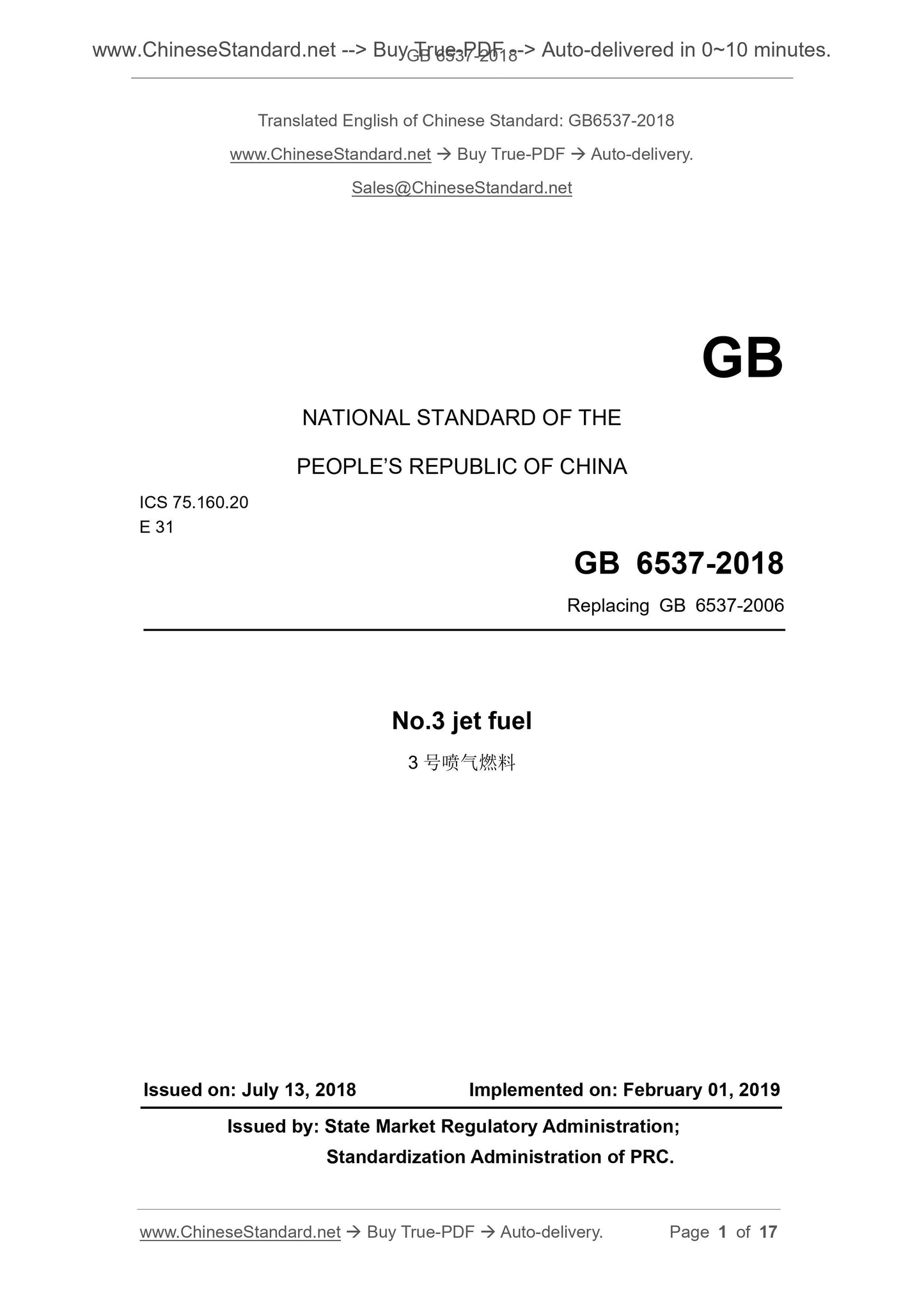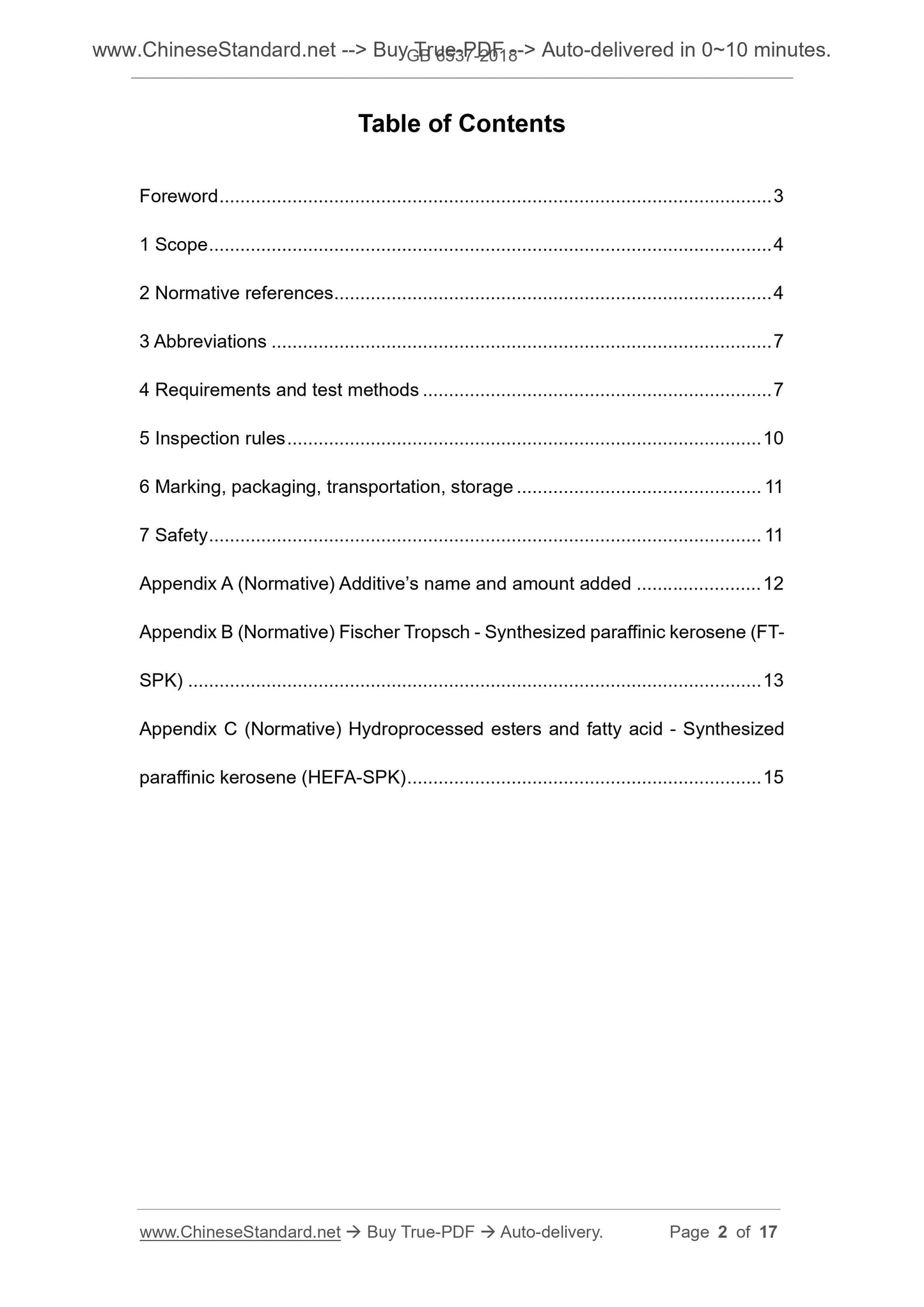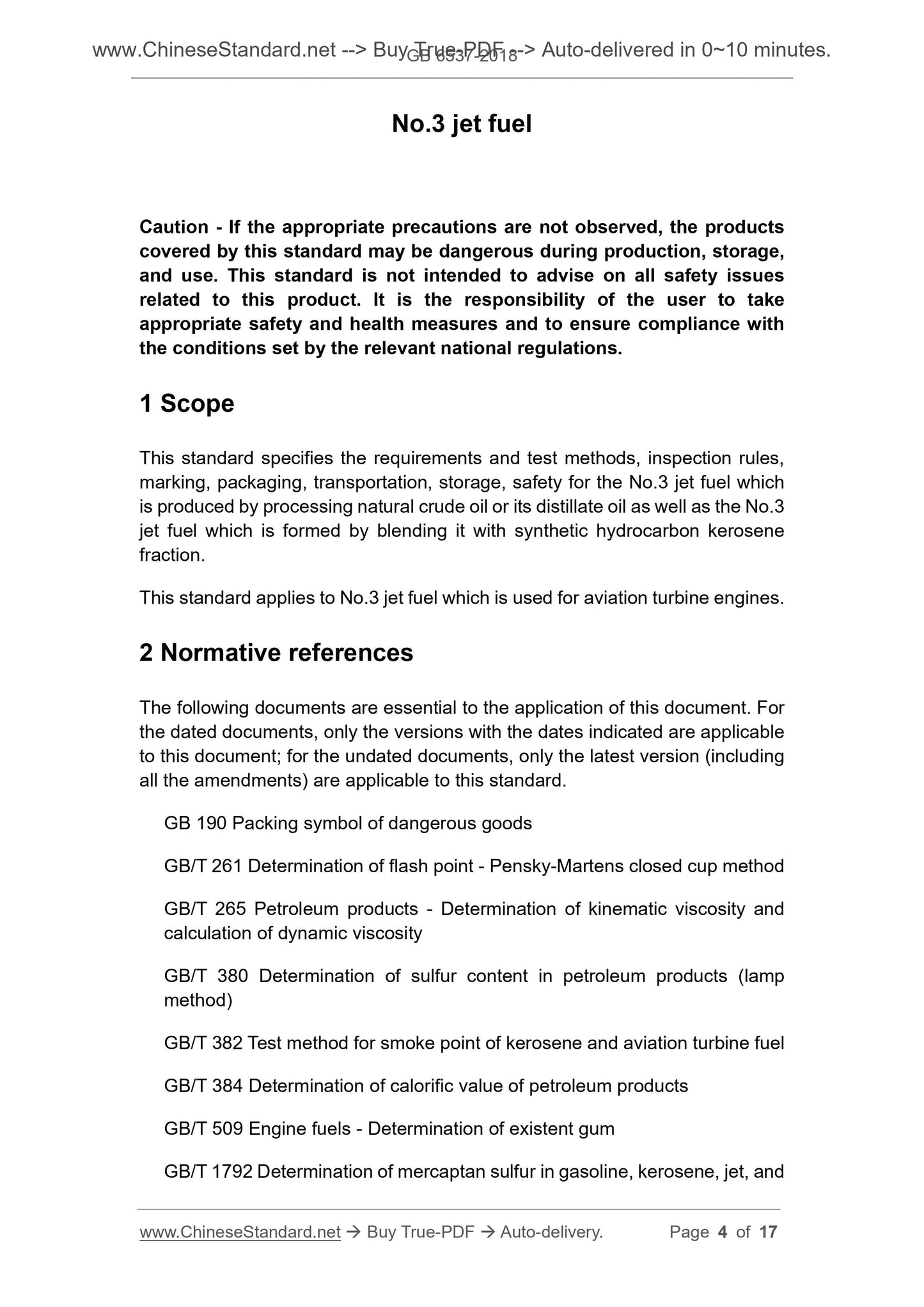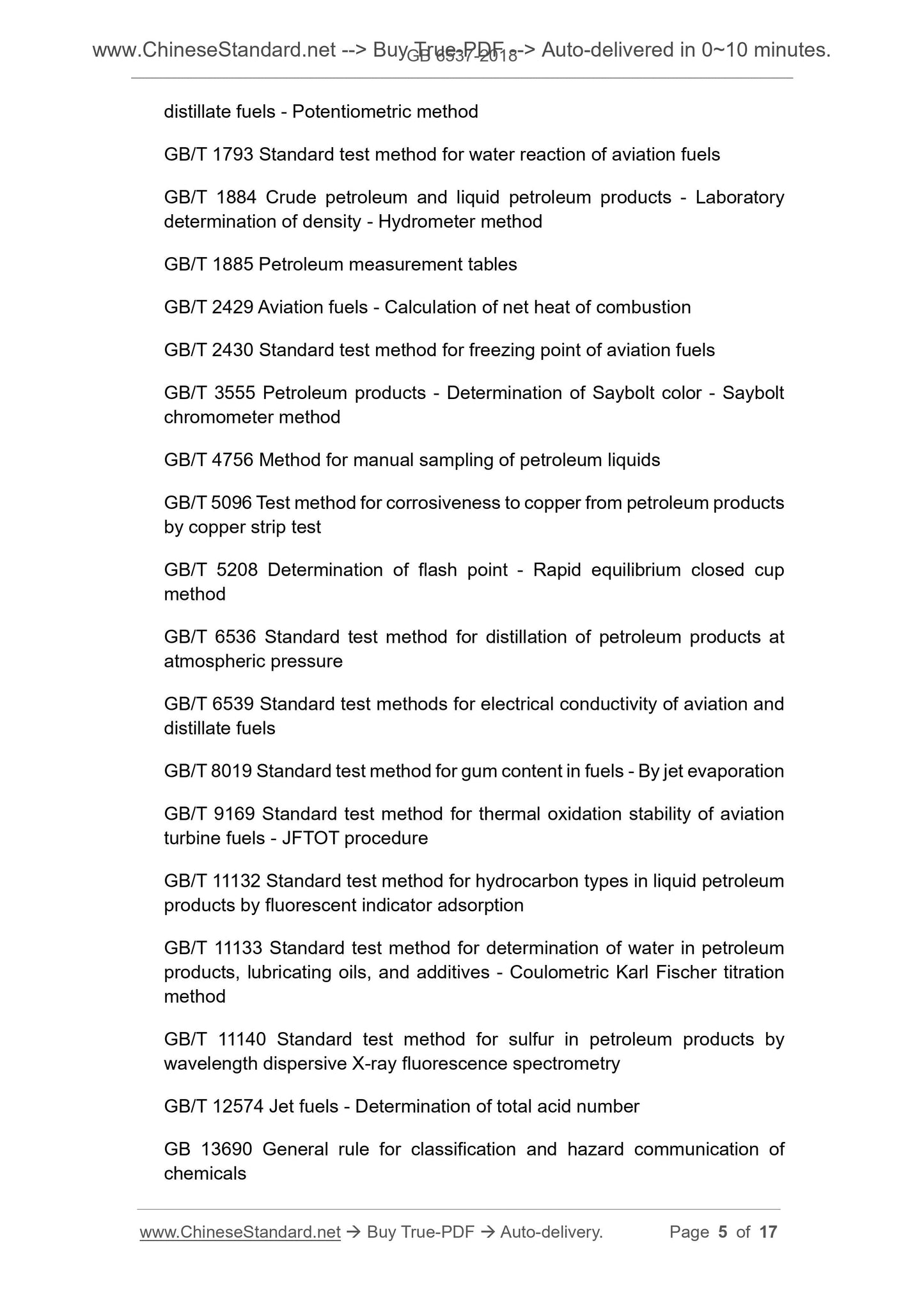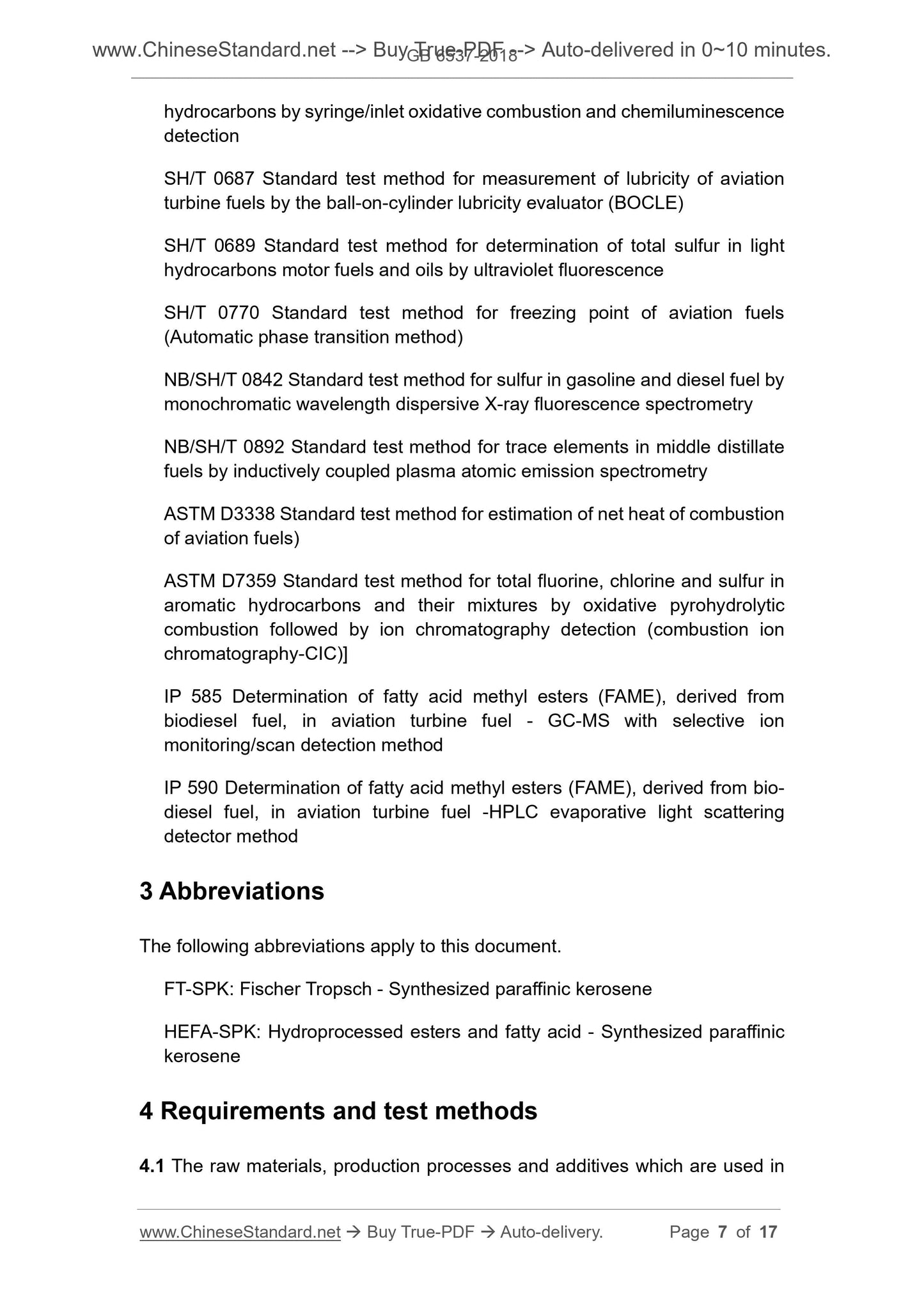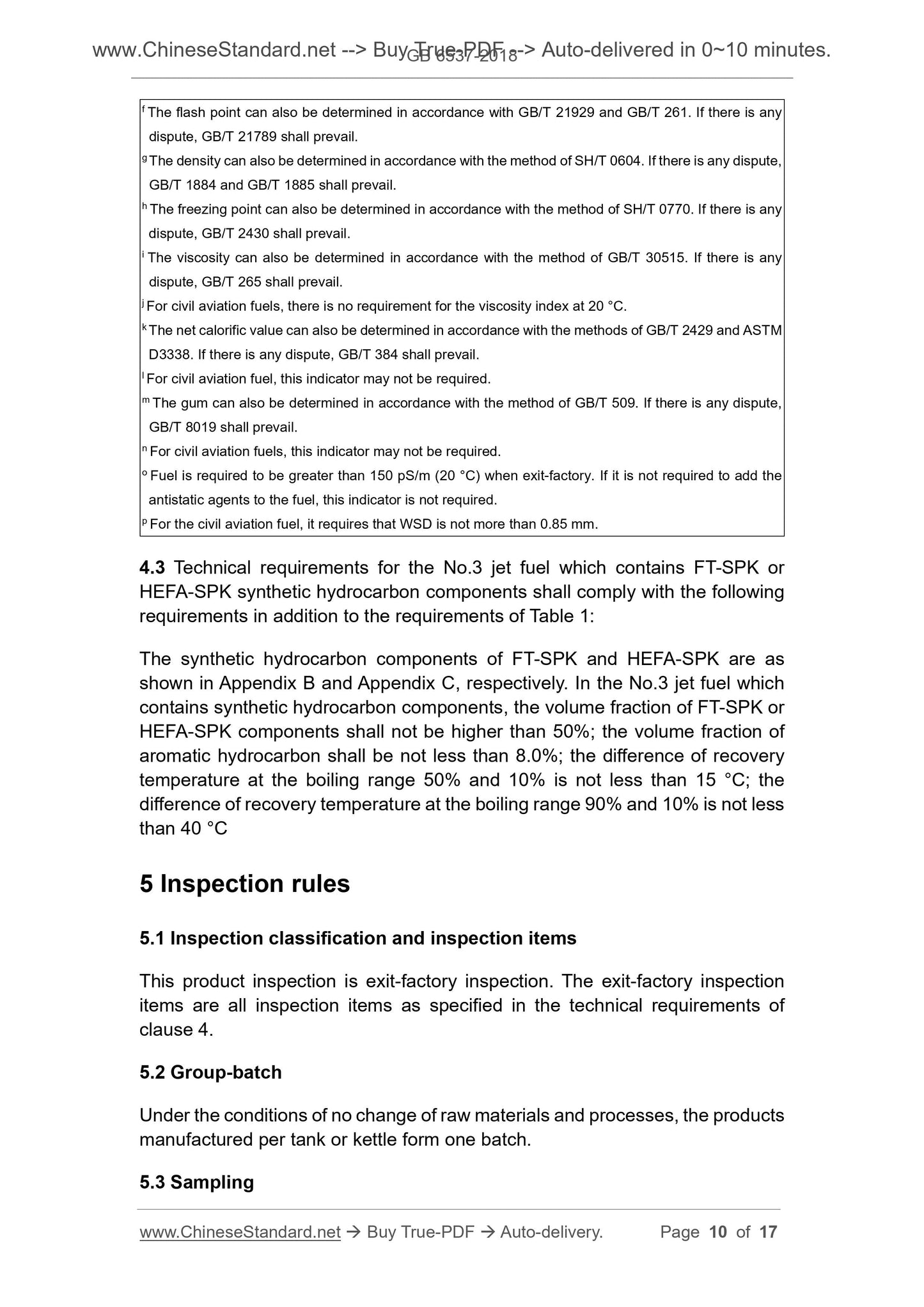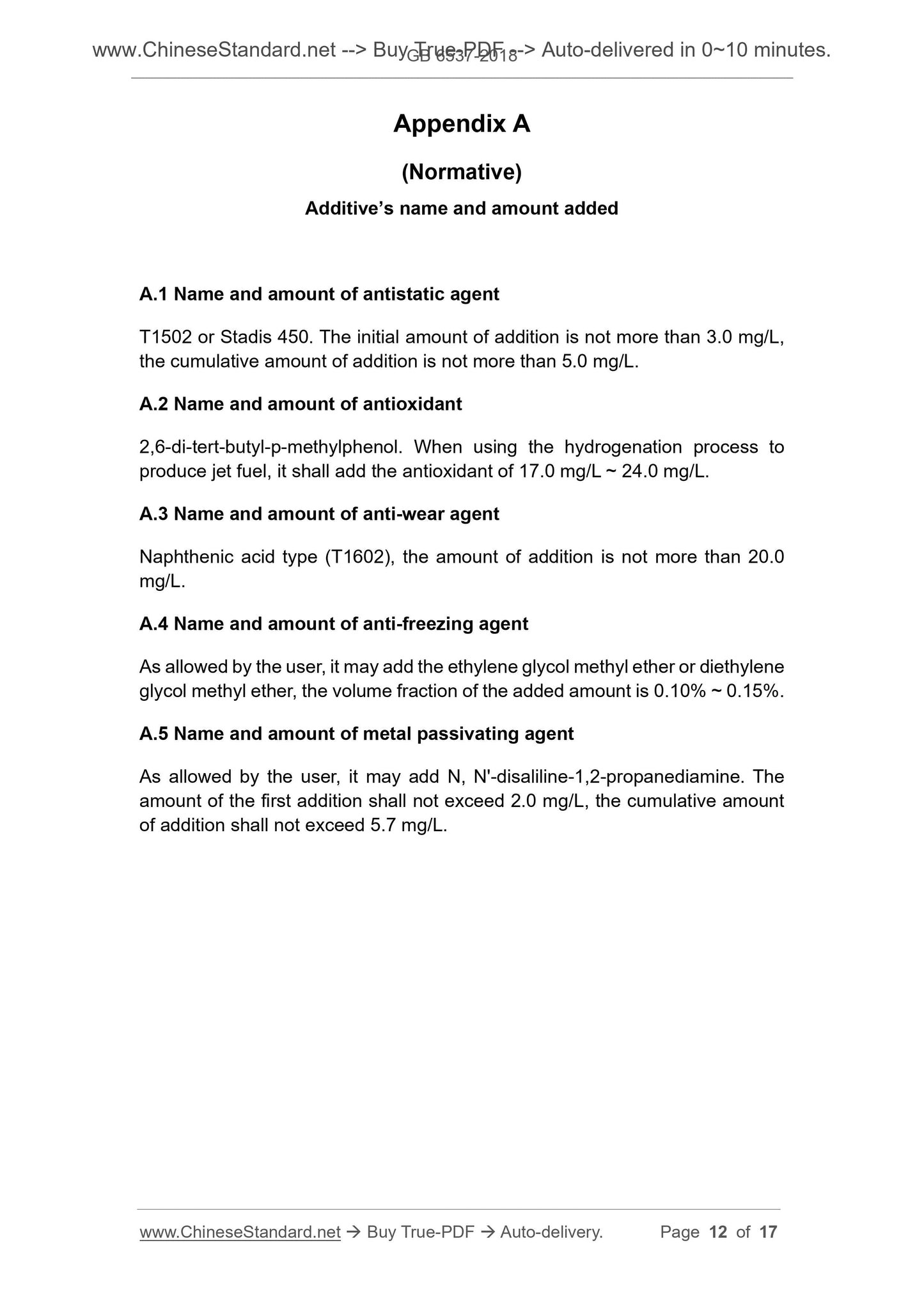1
/
of
7
www.ChineseStandard.us -- Field Test Asia Pte. Ltd.
GB 6537-2018 English PDF
GB 6537-2018 English PDF
Regular price
$155.00
Regular price
Sale price
$155.00
Unit price
/
per
Shipping calculated at checkout.
Couldn't load pickup availability
GB 6537-2018: No.3 jet fuel
Delivery: 9 seconds. Download (and Email) true-PDF + Invoice.Get Quotation: Click GB 6537-2018 (Self-service in 1-minute)
Newer / historical versions: GB 6537-2018
Preview True-PDF
Scope
This standard specifies the requirements and test methods, inspection rules,marking, packaging, transportation, storage, safety for the No.3 jet fuel which
is produced by processing natural crude oil or its distillate oil as well as the No.3
jet fuel which is formed by blending it with synthetic hydrocarbon kerosene
fraction.
This standard applies to No.3 jet fuel which is used for aviation turbine engines.
Basic Data
| Standard ID | GB 6537-2018 (GB6537-2018) |
| Description (Translated English) | No.3 jet fuel |
| Sector / Industry | National Standard |
| Classification of Chinese Standard | E31 |
| Classification of International Standard | 75.160.20 |
| Word Count Estimation | 14,152 |
| Date of Issue | 2018-07-13 |
| Date of Implementation | 2019-02-01 |
| Issuing agency(ies) | State Administration for Market Regulation, China National Standardization Administration |
Share
